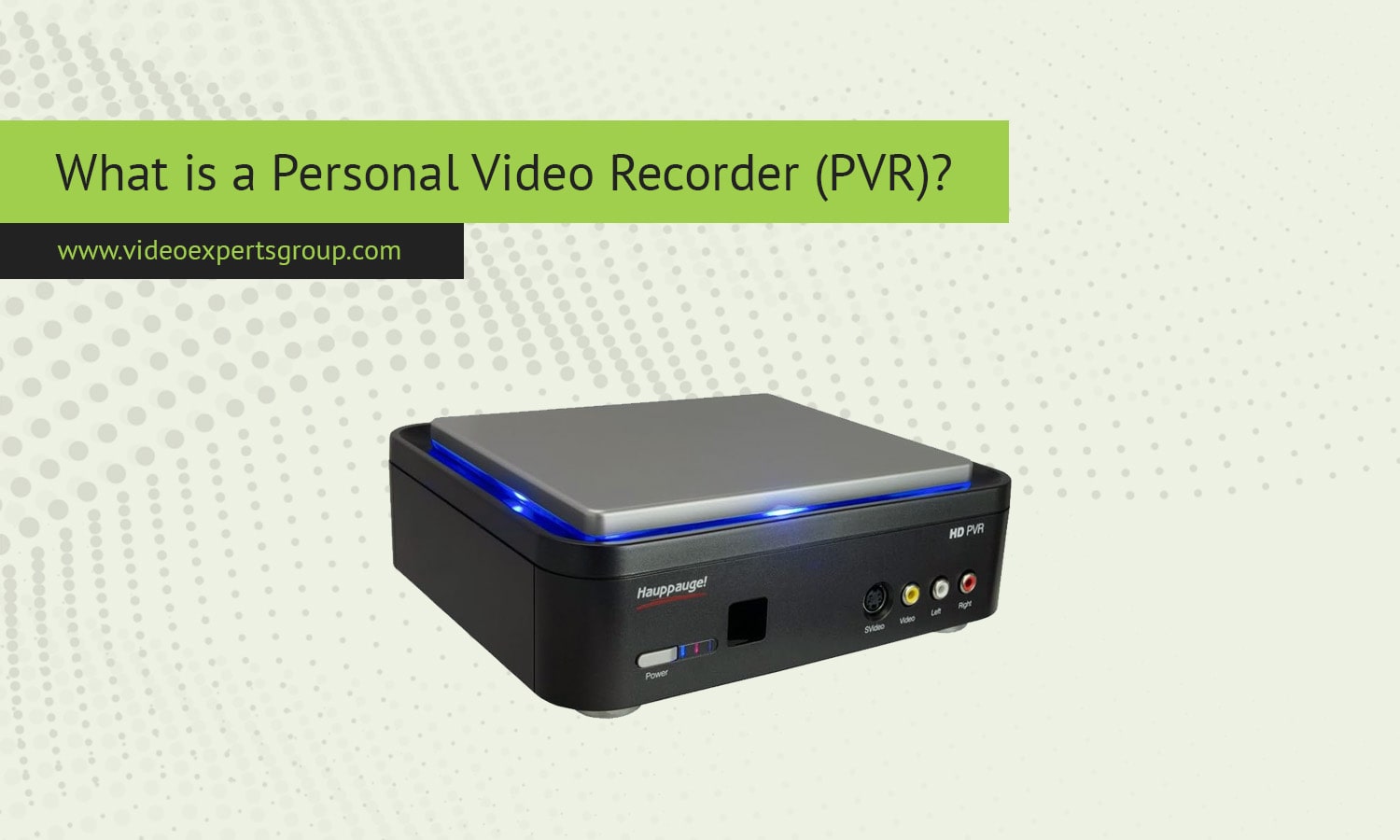In today’s digital age, the way we watch television and record our favorite programs has evolved significantly. Gone are the days when you had to record a TV show using VHS tapes or miss an episode if you weren’t around to watch it live. A Personal Video Recorder (PVR) is a device that lets you record live television broadcasts digitally, store them, and watch them whenever you like. PVRs offer a convenient, user-friendly way to ensure you never miss a show, game, or movie again.
This article will take a closer look at what a PVR is, how it works, its advantages and disadvantages, and some of the best PVR recorders on the market. Let’s explore the world of PVRs and see why they’re an essential tool for many TV enthusiasts.
Definition
A Personal Video Recorder (PVR), also known as a Digital Video Recorder (DVR), is an electronic device or software application that records television shows, movies, and other live broadcasts in digital format. Unlike older video cassette recorders (VCRs) that recorded analog signals onto tapes, PVRs record content directly onto a hard drive or solid-state memory. This digital storage allows for high-quality recordings and advanced features such as pausing, rewinding, or fast-forwarding live television.
PVRs can come as standalone devices connected to a TV, built into cable or satellite set-top boxes, or integrated into smart TVs. They offer flexibility by allowing users to schedule recordings, create recording libraries, and even enable "time-shifting" – the ability to pause live TV and resume it later.
How PVR Works
The basic function of a PVR is to capture the broadcast signal from a cable, satellite, or antenna, encode it into a digital format, and store it on a hard drive. Here’s a closer look at the key steps involved in how a PVR works:
-
Receiving the Signal: The PVR connects to your TV service, which could be cable, satellite, or over-the-air broadcast. It receives a signal in real-time, just like any TV tuner.
-
Encoding and Compressing: The PVR encodes the incoming video and audio signal using a digital format, usually MPEG-2 or MPEG-4, to reduce the file size without sacrificing quality.
-
Storing the Content: Once encoded, the digital video is stored on a hard drive or a solid-state memory inside the PVR. Many PVRs allow you to categorize recordings by genre, title, or date, making it easy to manage your media library.
-
Playback and Time-Shifting: With PVRs, you can watch the stored content whenever you want. You can pause live TV and resume it at any time, rewind to re-watch a part you missed, or fast-forward through recorded content, such as commercials.
-
Scheduled Recording: Most PVRs have built-in programming guides. You can browse through the schedule, select a program you want to record, and set the PVR to capture it when it airs, even if you’re not at home.
Advantages and Disadvantages
Advantages of PVR:
-
Convenience and Flexibility: PVRs give you the freedom to watch your favorite shows on your schedule. You can record programs and watch them later at your convenience.
-
High-Quality Recordings: Since PVRs record content in digital format, they offer better picture and sound quality than analog recording methods.
-
Time-Shifting: The ability to pause, rewind, and fast-forward through live TV or recorded shows adds a lot of convenience for viewers.
-
Storage and Organization: PVRs offer large storage capacities, allowing you to build a personal library of shows and movies. You can organize your recordings by date, genre, or title for easy access.
-
No Need for Physical Media: Unlike VCRs, which required tapes, PVRs don’t need any physical media. This is more efficient and environmentally friendly, and it reduces clutter.
Disadvantages of PVR:
-
Cost: PVRs can be expensive, especially those with high storage capacities or advanced features.
-
Limited Storage: Although PVRs have large hard drives, storage is still finite. If you record frequently, you might eventually need to delete older content to make room for new recordings.
-
Subscription Services: Some PVR services, especially those provided by cable or satellite providers, may require monthly subscription fees.
-
Reliance on Power and Internet: Many PVRs need power and, in some cases, an internet connection to work optimally. A power outage or internet disruption can interfere with scheduled recordings.
Which PVR Recorder is the Best?
Choosing the best PVR depends on your preferences, budget, and the features you’re looking for. Here are a few top PVR models that are popular for their features and reliability:
-
TiVo Bolt VOX
-
Humax HDR-1100S
- Features: Built-in Freeview or Freesat tuner, HD recording, on-demand app support.
- Pros: Affordable option with robust features for basic TV recording needs.
- Cons: Limited storage compared to some competitors; lacks advanced smart features.
-
Sky Q
- Features: 4K UHD support, multi-room viewing, voice control, streaming capabilities.
- Pros: Excellent integration with live TV and on-demand content.
- Cons: Requires a Sky subscription and can be expensive.
-
Dish Hopper 3
- Features: 4K UHD support, large storage capacity, multi-room capability, integration with streaming apps.
- Pros: Ideal for families or homes with multiple viewers; lots of storage and features.
- Cons: Requires a Dish Network subscription; initial setup cost can be high.
FAQ
A Personal Video Recorder (PVR) is an excellent choice for anyone looking to take control of their TV-watching experience. With the ability to record live television, manage your own media library, and enjoy features like time-shifting, PVRs make TV more convenient and accessible than ever. While they do come with some downsides, the benefits generally outweigh the disadvantages, especially for avid TV viewers. Choosing the best PVR will depend on your personal needs, so consider storage capacity, compatibility, and subscription requirements when selecting a model.
















